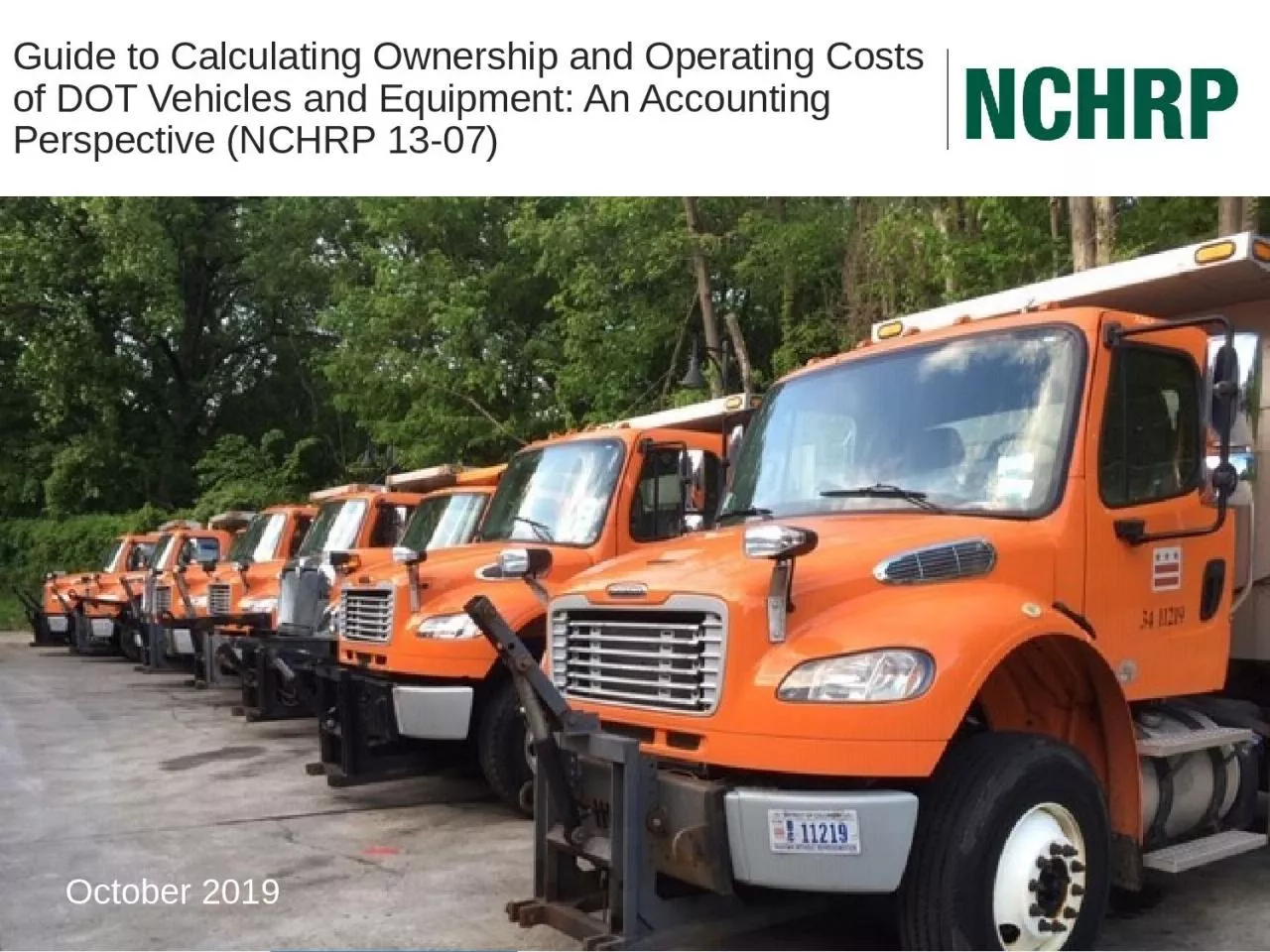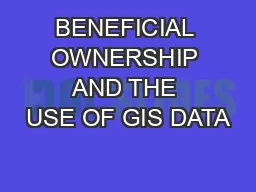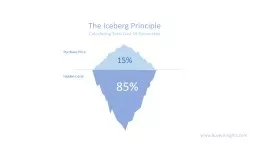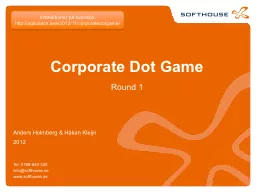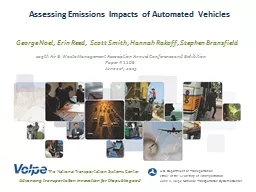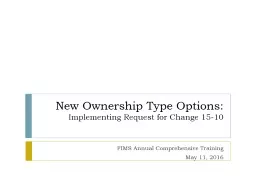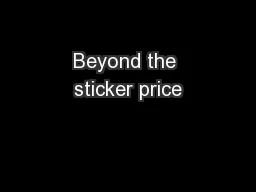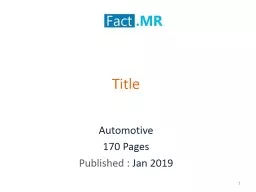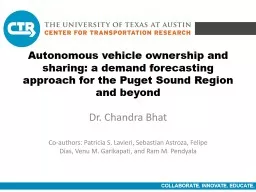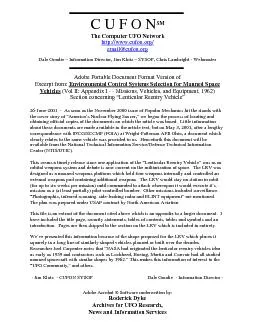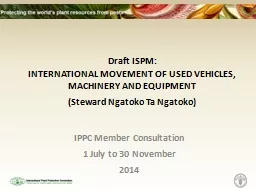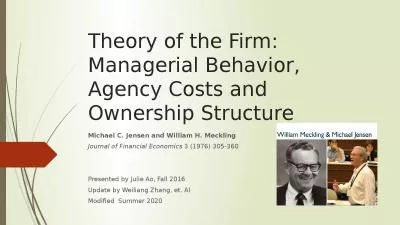PPT-Guide to Calculating Ownership and Operating Costs of DOT Vehicles and Equipment: An
Author : felicity | Published Date : 2023-11-05
Accounting Perspective NCHRP 1307 October 2019 Project Team 2 Authors Dr Geoff Morrison Cadmus Henry Canipe Kercher Group Andy Burnham Argonne National Lab NCHRP
Presentation Embed Code
Download Presentation
Download Presentation The PPT/PDF document "Guide to Calculating Ownership and Opera..." is the property of its rightful owner. Permission is granted to download and print the materials on this website for personal, non-commercial use only, and to display it on your personal computer provided you do not modify the materials and that you retain all copyright notices contained in the materials. By downloading content from our website, you accept the terms of this agreement.
Guide to Calculating Ownership and Operating Costs of DOT Vehicles and Equipment: An: Transcript
Download Rules Of Document
"Guide to Calculating Ownership and Operating Costs of DOT Vehicles and Equipment: An"The content belongs to its owner. You may download and print it for personal use, without modification, and keep all copyright notices. By downloading, you agree to these terms.
Related Documents

